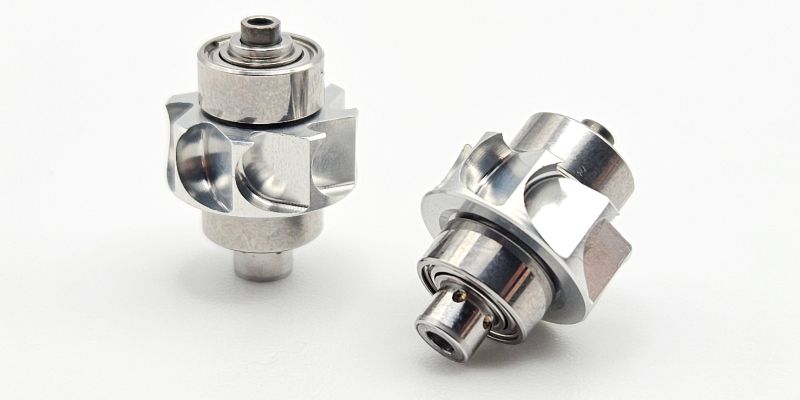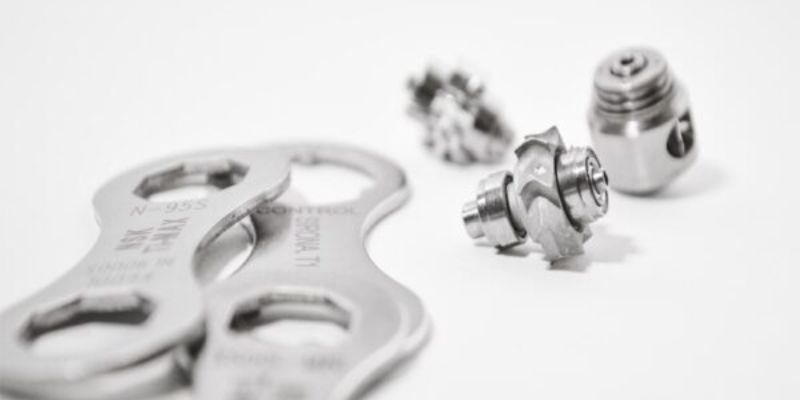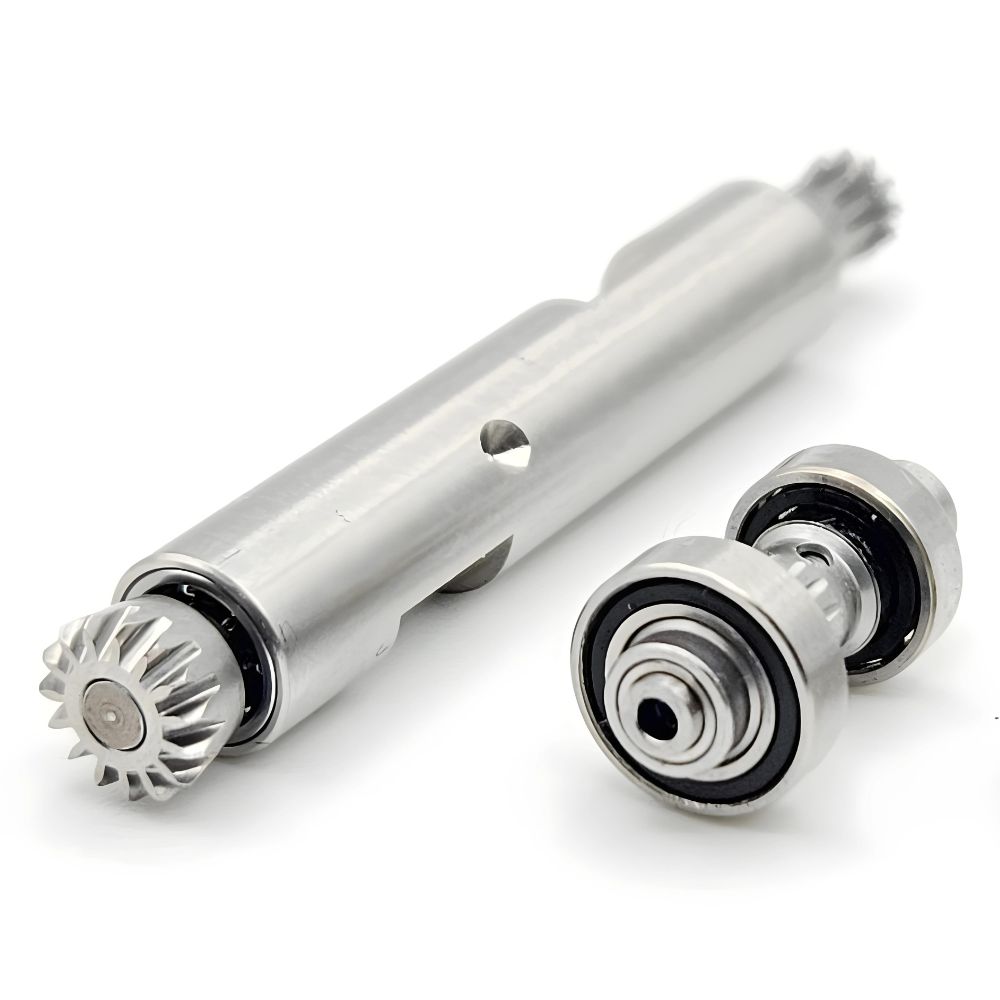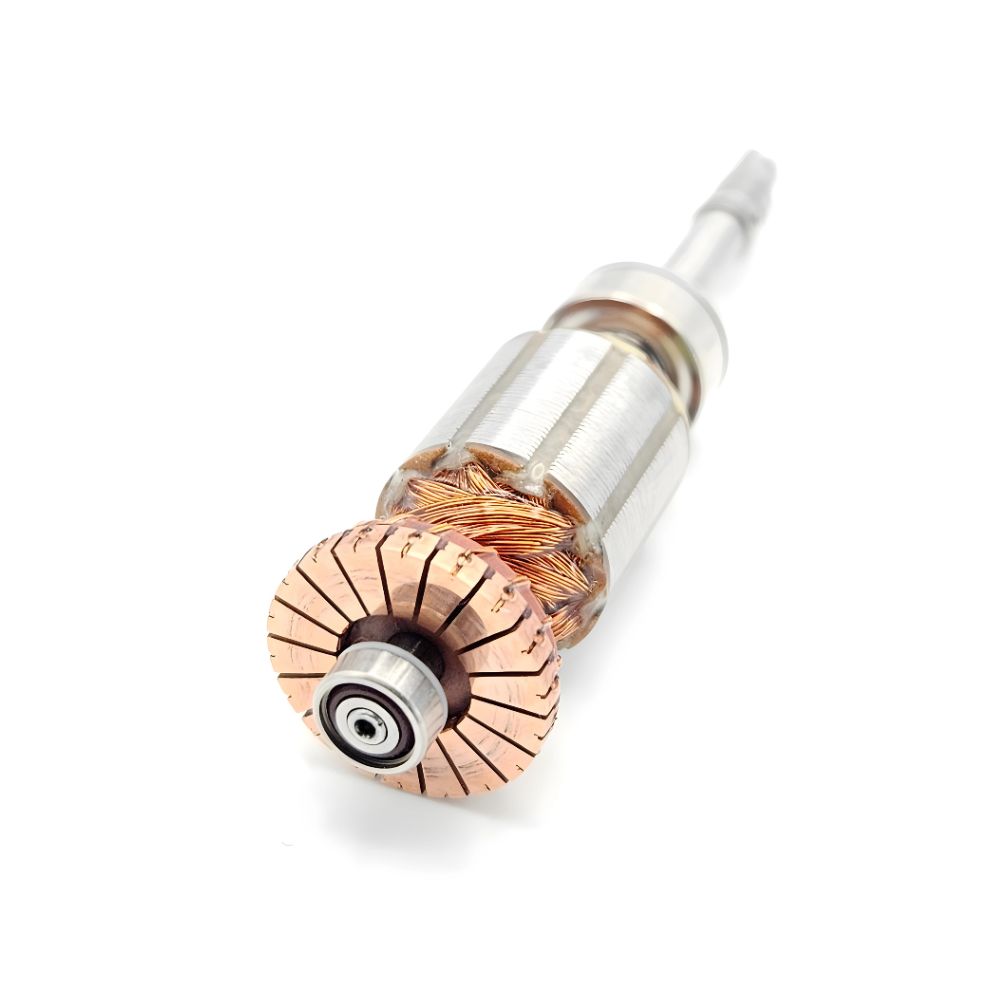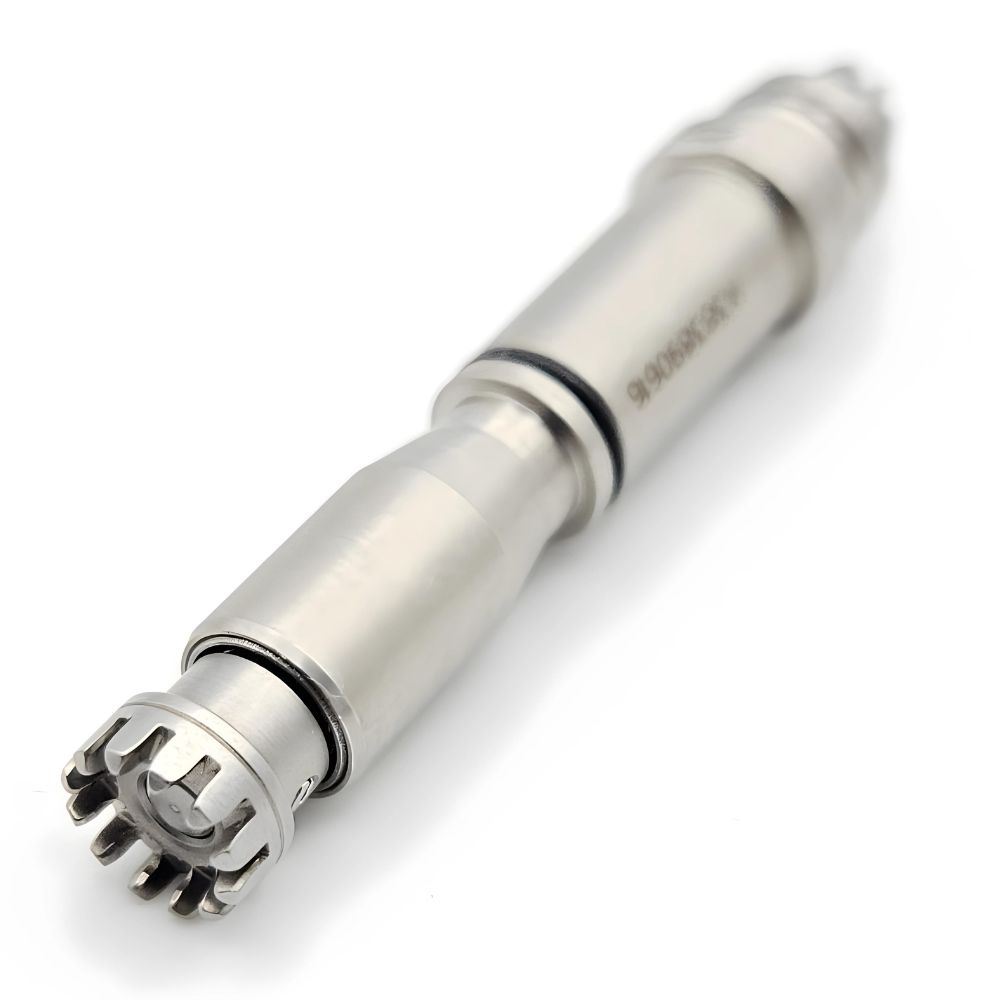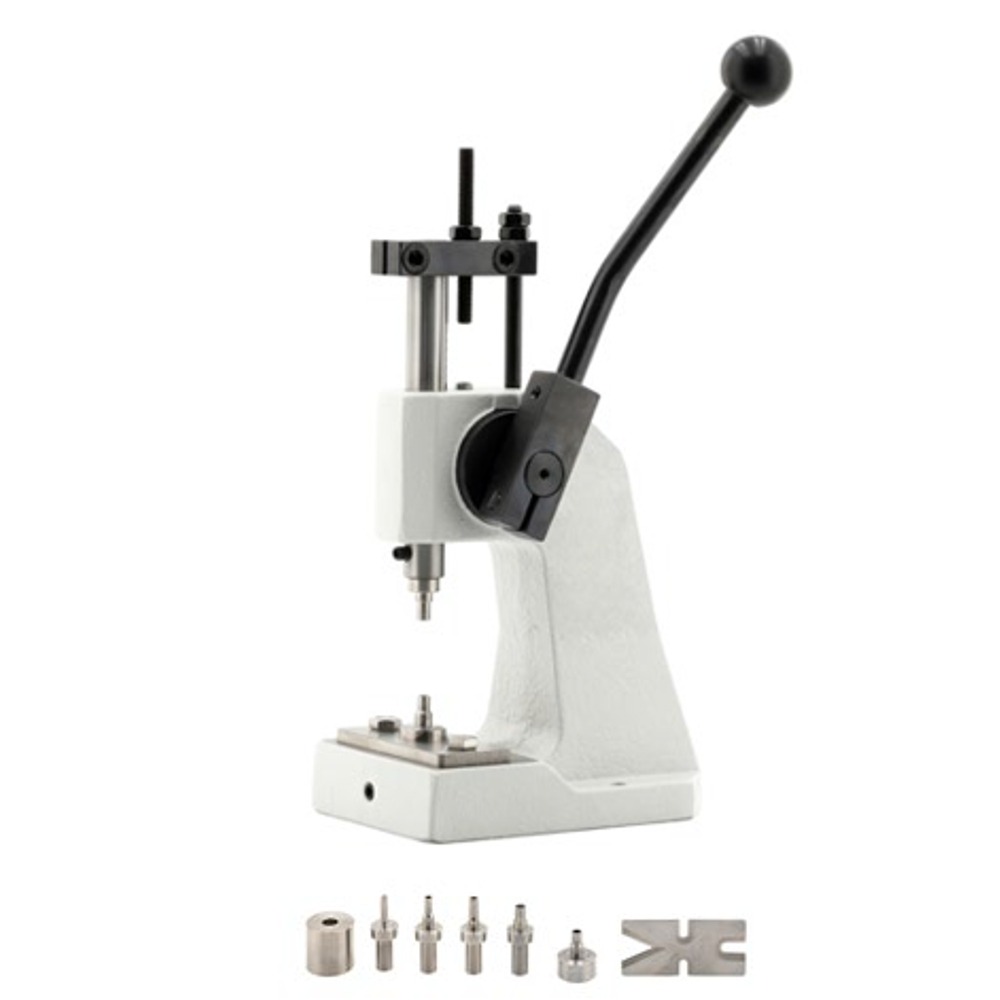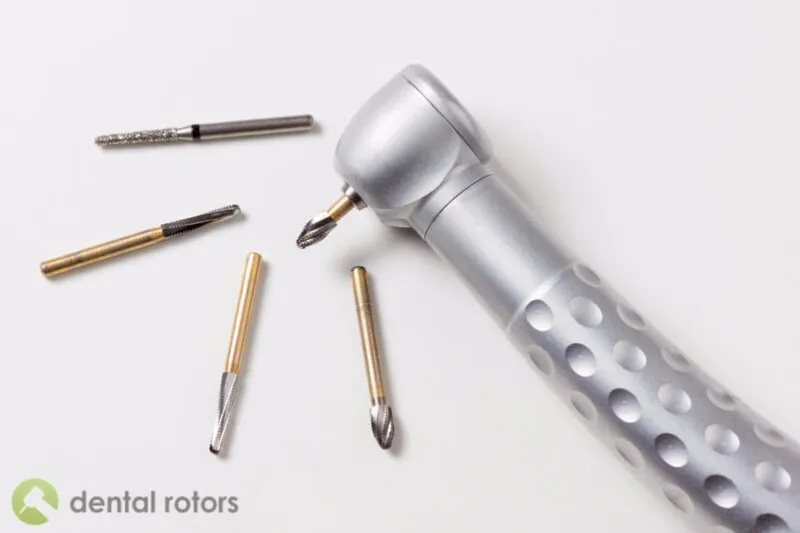Dental Drill
Dental Drill
Dental Handpiece or Dental Drill is a mechanical device which by dentists to remove decay, alter prostheses, polish fillings, etc. It’s a hand-held device and from there the name Handpiece comes from.
Dental Handpieces have a small electric motor also called a micromotor which provides rotating power to the connected shaft which can further be used for various dental operations like cutting.
There are various pieces of evidence that bow drills were used for various dentistry practices as far back as 7000 BC. A British dentist named George Fellows Harrington invented the very first mechanical drill (named Erado) back in 1864, but it was very noisy.
In 1875, an American dentist named George F. Green developed the first electrical dental handpiece which revolutionized the whole dentistry industry. Later, during the 1950s and 1960s, a whole new type of drill was
What is a Dental Handpiece/Drill?
A dental Handpiece is a small hand-held rotating device used for various dental operations like decay removal, fillings polishing, shaping root canals, teeth cleaning, etc. Dentists use the device to drill certain areas of teeth.
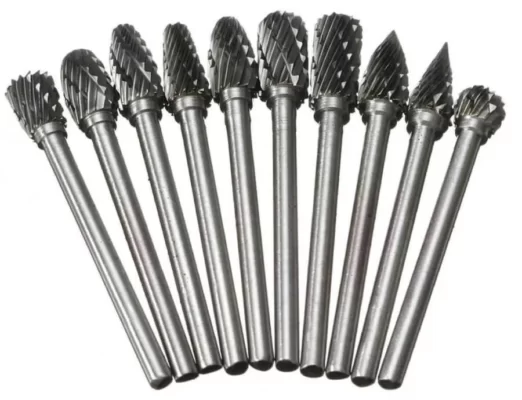
Different kinds of dental burrs are attached to the rotating shaft of the handpiece as per the requirements. Generally, dental burrs are made up of tungsten carbide or sometimes of a diamond.
Types of Dental Handpieces
Of course, there are a lot of types of handpieces in use out there.
On the basis of rotating speed, there are 2 types:
- High-Speed Dental Handpiece
- Low-Speed Dental Handpiece
The high-speed ones can have a rotation up to 400,000 rpm and the low-speed ones can have a rotation up to 80,000 rpm.
On the basis of design, there are 2 types:
- Air-driven Handpieces
- Electric Handpiece
Since the air turbines are way faster than that of the electric dental motor, air-driven handpieces mostly come under the high-speed category. And, most of the electric handpieces are of low speed.
Air-driven handpieces are run by an air-driven turbine and are a bit noisy; whereas electric handpieces are quieter and are powered by small electric dental motors called micromotors.
Main Parts of a Dental Handpiece
A modern handpiece is a very sophisticated piece of tech that contains multiple small components within the casing.
Parts of a dental handpiece, some of the main and important parts of a dental drill are:
1. Turbine Rotor
A handpiece turbine rotor is the main rotating part that connects the outer shaft to which various dental burrs can get attached.
2. Bearing
A single handpiece contains multiple bearings. These help to reduce the friction prevent shafts from touching the walls of the casing and let them rotate without any interruptions.
Generally, two types of bearings are used – one, angular contact ball bearing, and two, deep groove ball bearing.
3. LED and Xenon Bulbs
Many modern handpieces come with a light source attached at the top of it in order to see the inside-mouth view properly.
4. Dental Hose
The dental hose is a tubing that gets connected to the dental unit for water spray, air, and electricity in order to power the LED or Xenon bulbs.
5. Back Cap
The back cap is a component that seals the back of the dental drill. It’s a pretty small-looking component and found in air-driven drills.
6. Carbon Brush
The carbon brush is a small part that transmits an electrical current to a rotating part from a static part. The micromotors inside the electrical handpieces have these carbon brushes. But, most of the new-gen micro dental motors are completely brushless.
7. Keys & Wrenches
The handpiece doesn’t contain these keys and wrenches by default. These are some tools to repair the device.
8. Other Dental Handpiece Repair Tools
As design-wise drills are very sophisticated, the chances of the device malfunctioning get high too. All dental handpiece manufacturing companies have different kinds of repair tools as per the design of handpieces.
9. Chuck
Chucks are the component that holds the dental burrs for grinding and drilling purposes.
Companies Manufacturing Dental Handpieces and Their Parts
Although there are a lot of companies in the dental drill manufacturing business after the mid-19th century.
But some of the reputed and famous manufacturing companies are:
These are some of the top ones which are well-known for their quality and design.
How to Clean a Dental Handpiece
No doubt that modern dental equipment is pricey and if not taken care of properly, their repairs are not cheap either. However, with time upon regular use, these will need repairs.
To make sure that the drills keep working properly, regular cleaning and maintenance become necessary. Not only has that, but regular cleaning also reduced the chances of various unexpected hazards.
The followings are some tips that are useful for the maintenance of a dental handpiece:
- Wipe down after every single-use
- Clean under running water if doesn’t look clean
- Lubricate the moving parts regularly
- Remove the burr after each use
- Do not start without the burr
- Sterilize the handpiece regularly
- Clean & remove any kinds of bio-burden buildup
- Always test on a paper towel before taking it into the mouth
Conclusion:
The technological advancements in the field of dental handpieces are not at the point of saturation yet. By each coming year, some great features and functionality are being added to the device.
As dental drills are costly and pretty sophisticated in design, proper care, and maintenance are essential to save money as well as to avoid any mishaps while operating.
The Dental Drill
The dental drill is one of the most important dental instruments ever invented. It is drill is largely used all over the world, dentists need it in order to bore through tooth enamel (treating cavities) and to clean and remove plaque from the tooth’s surface (for aesthetic purposes or to prepare the teeth for facets).
The appearance of this instrument in the field of dentistry was a true revolution and it attracted a huge process of inventing and producing dental spare parts. We decided to present you with an overview of dental drills and the process of their creation.
Design
If you ever decide to buy dental tools, you’ll see that a lot of different designs of dental drills are available on the market. However, they all have the same basic features, like motors, a handpiece, couplings, and a drill bit.
An air turbine activates high-speed drilling (invented a while ago and so popular at the moment, that is used in most dental instruments).
These devices transform highly pressurized air into mechanical energy, making it possible for drill bits to rotate over 300,000 rpms. Dental drills are typically equipped with secondary motors, too, because slower speeds are also necessary (usually for polishing, finishing, and soft tissue drilling). That’s why, frequently, dental drills include both electric motors and air-driven motors.
One of the most important parts of the dental drill is the handpiece – a slender, tube-shaped device that fastens the drill bit with the driving motor. It is often featherweight and organically designed.
There are some interesting handpiece parts, like the E-shaped attachment (its role is to provide the proper angle of the drill, for maximum system stability). The latest health concerns have forced designers to create handpieces that can withstand high-pressure steam sterilization, in order to avoid spreading infections through dental procedures. Other handpiece parts, like the couplings, consisting of two or four holes, are used to connect the drill unit to the electric or air power sources and cooling water.
Another critical handpiece part is the drill bit (also called bur). It is short and highly durable, capable to resist both heat the high-speed rotation. A lot of bur shapes are manufactured, each with varying cutting and drilling abilities, some of them being designed with diamond cutting flutes.
Supplementary features, such as coolant spray systems or illumination devices, can be added to them. The most complicated dental drill has an internal cooling system, an epicyclic speed-increasing gearbox, and fiber-optic illumination.
Raw Materials
Dental drills are made from a long list of raw materials, including metals and polymers. The handpiece, which houses the motors, gears, and drive shaft, can be made from materials ranging from lightweight/hard plastics to metal alloys (like brass), even titanium.
The bur is made of tungsten carbide, one of the hardest substances known. Other materials such as steel are used for the internal motors. The tubing that connects the drill to the main power sources is made of a flexible material, such as polymeric silicone or polyvinyl chloride (PVC).
The materials influence the lifespan, the maintenance and the functionality of the dental drill, so you have to be really careful if you decide to buy dental tools or dental spare parts. Some special precautions should be taken into account if you decide to buy dental tools online. Be sure you make consistent research on materials and manufacturers of the instruments you want to buy.
The manufacturing process
The production of a dental drill is an interspersed process – individual components are made first and then assembled to create the final product. Manufacturers could make each part individually, but they usually depend on outside suppliers for many of the parts. A typical production method would include constructing the motors and the drill bits, forming the handpiece, final assembly, and packaging.
- Handpiece
Albeit a lot of designs and materials are used to make the handpiece, typically they are all made using a mold. Plastic handpieces require injection molding. To do this, the plastic is melted, injected into a mold, and released after it forms. Metal handpieces are regularly created through comparable methods.
- Drill bit
The drill bits are made from tungsten carbide particles. Tungsten ore is chemically processed to produce tungsten oxides. The oxygen is then removed by adding hydrogen to the system, thus obtaining a fine tungsten metal powder.
The last one is blended with carbon and heated, producing tungsten carbide particles of different sizes, which are further processed to form the appropriately shaped drill bit.
- Air turbine engine
The air turbine engine is constructed from small steel components. In one design, the turbine is caught between two sets of ball-raced bearings and connected directly to the drill bit.
The whole unit is restricted in the drill head, with openings for incoming air and exhaust air. Other types of turbine engines are farther up in the handpiece and are connected to the drill bit by a series of driveshafts and gears.
- Low-powered motors
The low-powered motors are constructed similarly to the air turbine engines. The rotary vane air-powered motor subsids of a core structure with sliding vanes pointing outward. It is placed in the handpiece and linked to the main drive shaft of the drill. It also has openings for incoming and outgoing air, similar to the air turbine engine.
Electric motors, consisting of a set of bearings, magnets, brushes, and armature coils are more complex, their structure being elaborate.
When all the components are finished, the time for the final assembly comes. Depending on the design, the air turbine can be put directly into the casing of the handpiece or it can be connected along with the drill bit.
The other parts of the drill are included in the handpiece, including air or electric motors, driveshaft, gears, and control switches. Other accessories are added, such as cooling hoses and fiber optic lighting devices. On one end of the handpiece, the coupler is placed, on the other end the drill bit is attached.
A series of quality checks are performed, and the finished drills are placed in the corresponding packaging with accessories, manuals, and replacement parts, then shipped to distributors all around the world.

